Chapter: The Massage Connection ANATOMY AND PHYSIOLOGY : Endocrine System
Hypothalamus - The Endocrine Glands
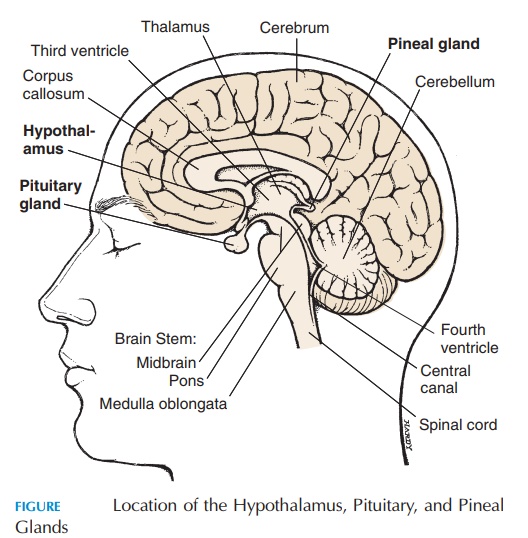
The Endocrine Glands
Classically, the endocrine system includes the hypothalamus, pineal, pituitary, thyroid, parathyroid, and adrenal glands; the pancreas (the islets); and the male testisand female ovaries (see Figure 6.3). Other tissue and organs with endocrine function in-clude the heart, kidney, thymus, liver, placenta, and the digestive tract.
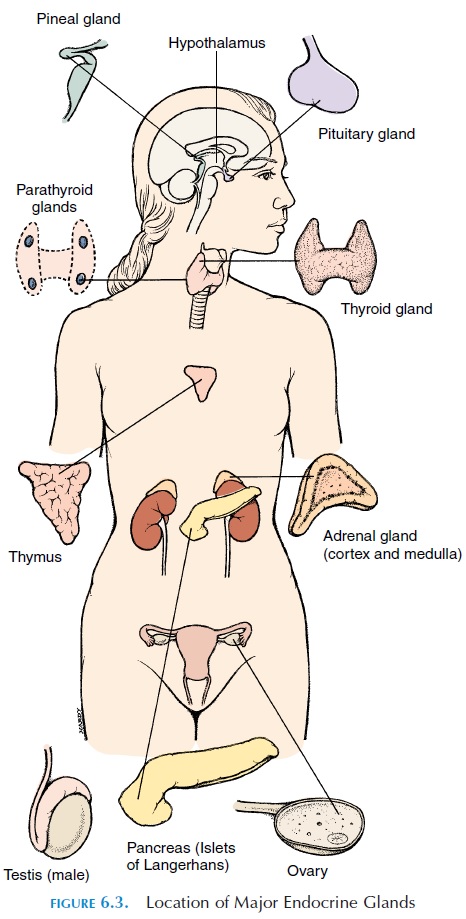
THE HYPOTHALAMUS
The hypothalamus, as the name suggests, is located in the brain below (hypo) the thalamus (see Figures 6.3 and 6.4). It is a large collection of neurons that have been divided into different groups or nuclei, according to their functions. The hypothalamus has a rich blood supply and extensive connections with different parts of the brain, such as the limbic system, cerebral cor-tex, thalamus, reticular activating system, sensory in-put from internal and external structures, and retina. Other than its endocrine function which will be de-scribed later, the hypothalamus regulates body tem-perature; hunger; thirst; sexual behavior; defensive re-actions, such as fear and rage; sleep; and activities of the autonomic nervous system .
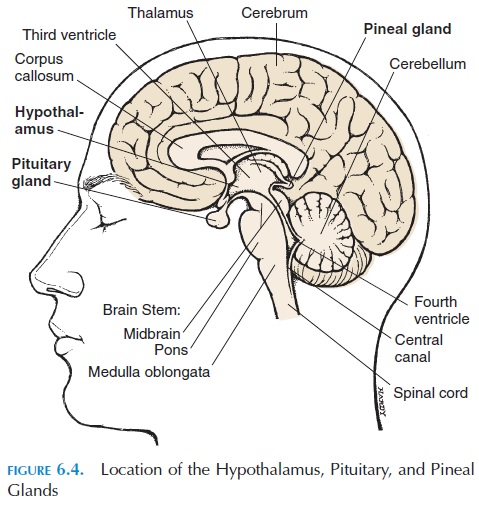
The close relationship between the nervous and endocrine systems can be appreciated fully in the hy-pothalamus, which is a part of the nervous system as well as the endocrine system.
The hypothalamus executes its endocrine effects through the pituitary gland and communicates with the pituitary gland via blood vessels and nerves (Fig-ure 6. 4). The blood, after flowing through the hypo-thalamus, flows to the anterior pituitary, and hypo-thalamic hormones regulate the secretion of pituitary hormones. Neurons connect the hypothalamus with theposterior pituitary. The cell bodies of these neu-rons lie in the hypothalamus; the axons descend to the pituitary, transporting the hormones vasopressin and oxytocinfrom the cell body to the nerve endings. The hormones are released into the blood in the pos-terior pituitary.
Hypothalamic Hormones
The hypothalamus controls the secretion of pituitary hormones; numerous hypothalamic releasing and in-hibiting hormones have been identified. Some stimu-late while others inhibit the pituitary gland (see Table 6.1). With the pituitary, the hypothalamus gland has an important role in regulation of growth and development, metabolism, and maintenance of homeosta-sis in the body.
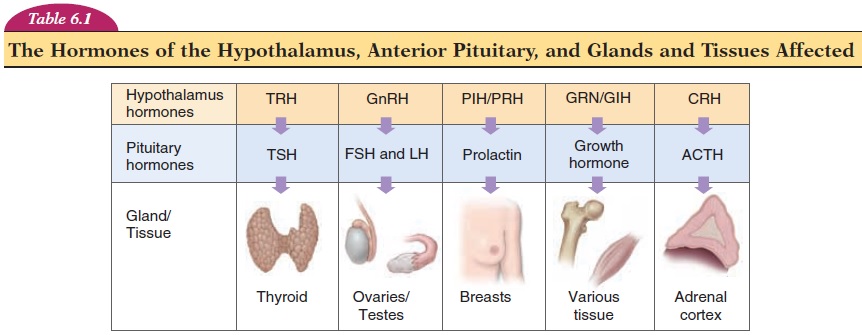
The thyroid-stimulating hormone (TSH) (thy-rotropin) of the pituitary is controlled by the thy-rotropin-releasing hormone (TRH). The reproduc-tive hormones of the pituitary—follicle-stimulating hormone (FSH) and luteinizing hormone (LH)—are controlled by the gonadotropin-releasing hormone (GnRH), also known as the luteinizing hormone-releasing hormone (LHRH). Prolactin, the pituitary hormone that regulates breast milk production, is con-trolled by prolactin-inhibiting hormone(PIH) and prolactin-releasing hormone (PRH). Growth hor-mone secretion by the pituitary is controlled by the growth hormone-releasing hormone (GRH) and growth hormone-inhibiting hormone (GIH), also called somatostatin. The pituitary secretion of adreno-corticotropic hormone (ACTH) (corticotropin) is con-trolled bycorticotropin-releasing hormone (CRH).
The Significance of the Control of thePituitary Gland by the Hypothalamus
The control of the hypothalamus of the pituitary gland is one example of the regulation of the endocrine sys-tem by the nervous system—neuroendocrine regula-tory function. It highlights the integration between the two systems. The nervous system receives ongoing infor-mation about the conditions in the internal (inside the body) and external (outside the body) environments via the sensory organs. Based on this information, it brings about somatic movements and also adjusts the rate of hormone secretion.
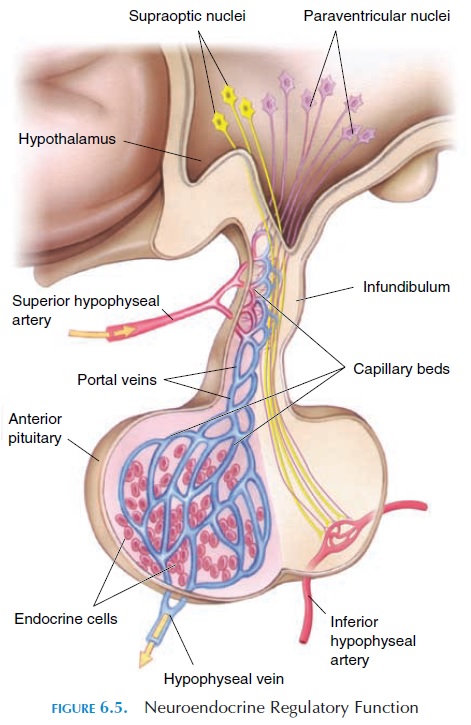
For example, the nervous system (the hypothala-mus and its nervous connections), based on the in-creasing number of daylight hours in spring, stimu-lates the gonads (testis and ovaries) of birds and mammals via GnRH and starts the breeding season. It is claimed that ovulation in Eskimo women ceases in winter and resumes in spring. In some other species, the sight of the male performing the mating dance in-creases GnRH production, ultimately resulting in ovu-lation. It is well known that emotion, stress, and travel can alter a woman’s menstrual cycle (Figure 6.5).
Because the hypothalamus has so many major functions, hypothalamus problems can present in many ways, such as precocious puberty (early attain-ment of puberty), obesity, abnormalities of tempera-ture control, anorexia, bulimia, and emaciation.
Related Topics